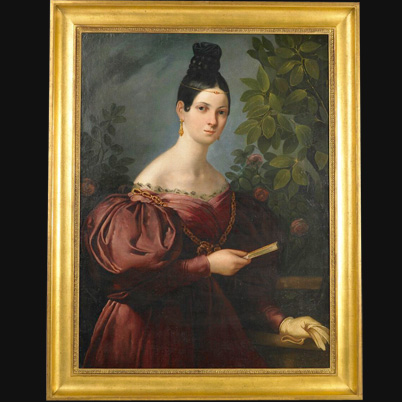The Exhibition
The exhibition features original objects, letters, manuscripts, playbills etc. which document the legendary personality Maria Malibran, her life and family, her musical environment and the operatic world in the early 19th century.
Anon.
Théâtre Royal Italien
Coloured engraving, Paris, n.d.
Ludwig van Beethoven
Fidelio
Playbill, Theatre Royal Covent Garden, London, 19 June 1835
Rossini reports that Maria learned the part of Leonore in Beethoven‘s Fidelio in eight days!
Maria Malibran
La Tarantella
dedicated to the Countess de Merlin
16 September 1831
Anon.
Maria as Rosina in Rossini’s Barbiere (?)
Staffordshire porcelain, c.1830
Porcelain figurines of this type were offered for sale by hawkers in front of theatres (nineteenth-century souvenir trade!).
Letter from Gioachino Rossini
to Pauline Viardot (Maria Malibran’s sister), “Artiste très célèbre”, in Baden-Baden
Passy de Paris, 20 September 1864
“Mad. Malibran and Mad. Viardot, two devils incarnate (musically speaking, of course) upon whom nature has lavished greatness and beauty, and who, with their genius and skill in performing my modest melodies, have contributed to the establishing of my small fame.”
Gioachino Rossini
La Cenerentola
Scribe’s copy, Venice, n.d.
“This score was performed by Sig. M. Malibran in the year 1835 in the Gran Teatro della Fenice on the 26th March 1835.”
With numerous variants (possibly embellishments in Maria Malibran’s own hand) for the famous final rondo.
Manuel García
(Nocturne) Per Dormire
Autograph, n.d.
The piano piece Per dormire was probably conceived as a lullaby without words for one of García’s children, Manuel, Maria or Pauline.
Medal of honour
for Maria MalibranMilan, 1834



